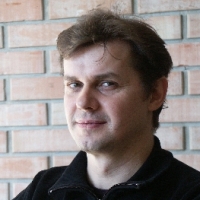
Despite the joy for experimentation and alterations, there is a constant in the life of the literature connoisseur: Homer’s “Ulysses”. In the 90s this fictitious journey already served as an inspiration for pieces like “Penelope”, “Kirke” or “Oxen of the Sun”. Even in 
The “Scherzo” was written for a number of commissioned works in the “nom de Haydn”. Due to Haydn’s string quartets opus 33, the “Scherzo” was mostly established as the third movement in a sonata or symphony. Extreme positions, fast runs and avoidance of chords characterize the three-movement piano work of Amann. These hectic, selective sounds are interrupted by many double bar lines, which can “be thought of as pauses”.
The composition for double bass solo is characterized by diverse playing techniques and the application of Amann’s precise sonic vision. On the other hand, the pitches and meters can be partially self-determined by the performers and provide opportunities for free interpretation. “Con anima, senza rigore” is not only the title of the work, but also describes the development of the composer. While once focused on the spiritual penetration of the material as a young student, in 2011 the emotions are increasingly set to the fore.
Margarete Buch
(translated from German)
Photo Michael Amann: Rudolf Rösch © Courtesy of Doblinger Musikverlag
